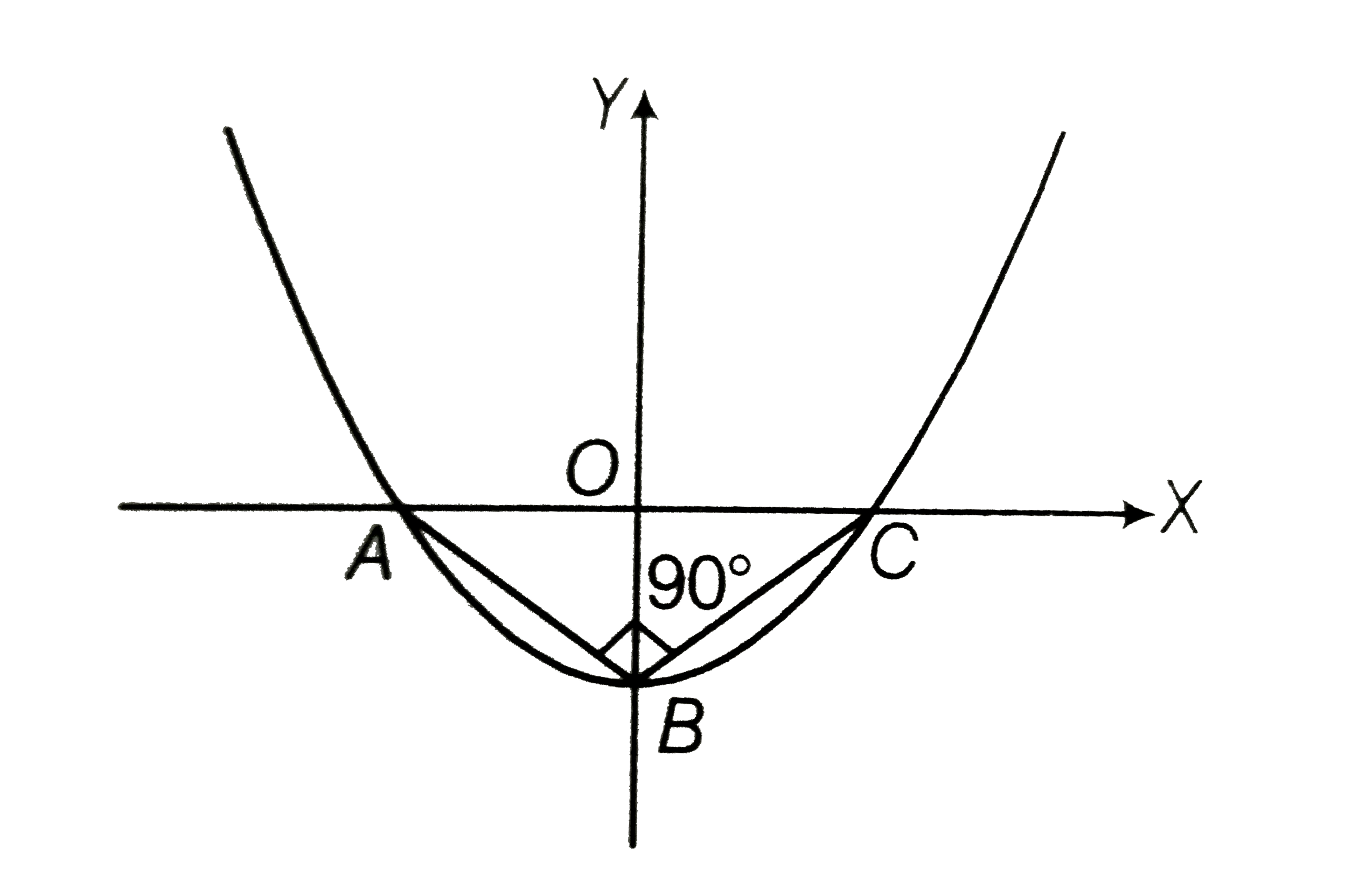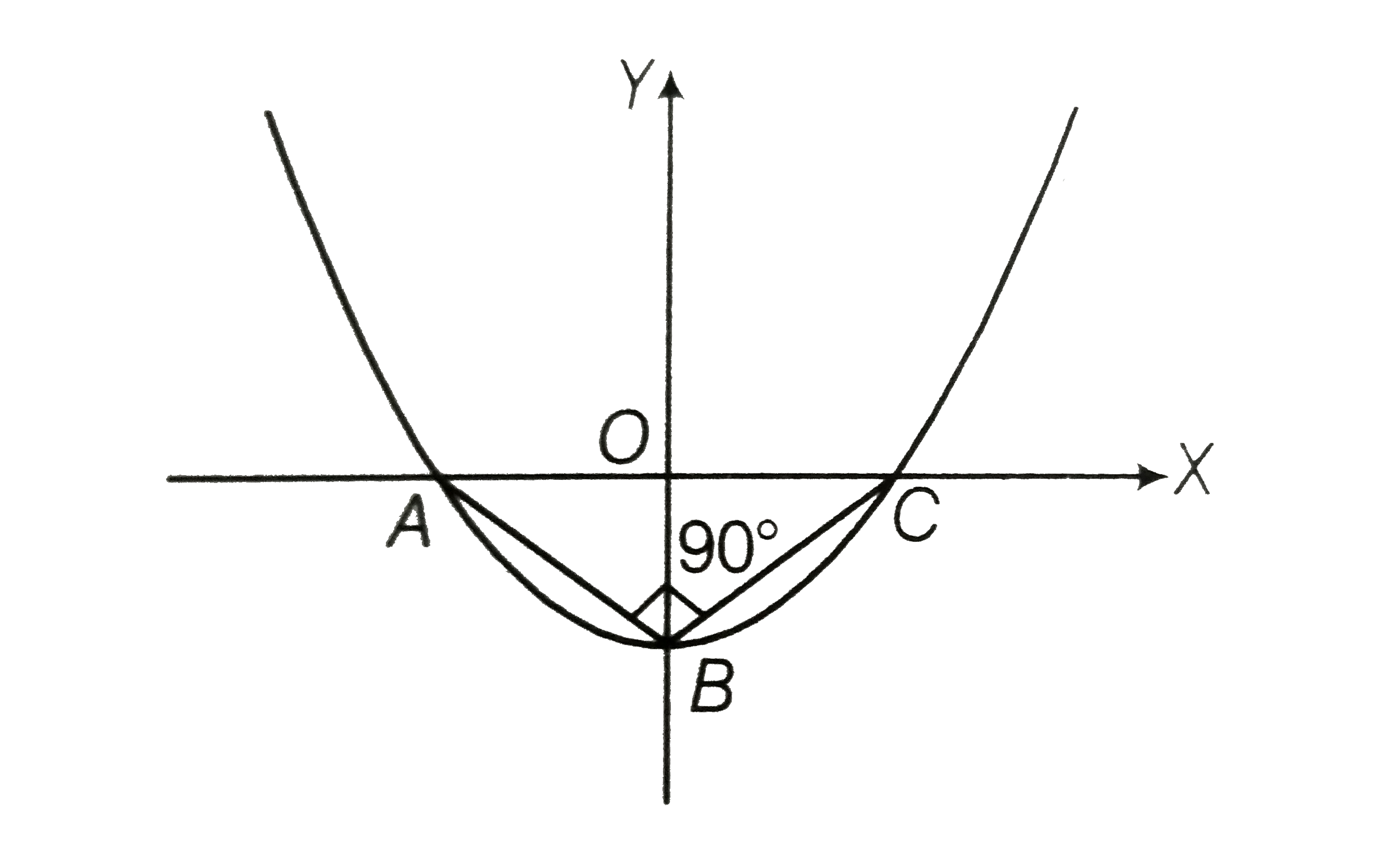In the given figure, vertices of ΔABC lie on y=f(x)=ax2+bx+c. The ΔABC is right angled isosceles triangle whose hypotenuse AC=4√2 units. Number of integral values of k for which one root of f(x)=0 is more than k and other less than k
6
4
5
7
The correct Answer is:3
f(x)=0
⇒x2/(2√2)−2√2=0 or x=±2√2
Therefore, number of integral values of K for which for which k lies in (−2√2,2√2) is 5.
Topper's Solved these Questions
- THEORY OF EQUATIONSBook:CENGAGEChapter:THEORY OF EQUATIONSExercise:Exercise (Matrix)
Explore 6 Videos
- THEORY OF EQUATIONSBook:CENGAGEChapter:THEORY OF EQUATIONSExercise:Exercise (Numerical)
Explore 43 Videos
- THEORY OF EQUATIONSBook:CENGAGEChapter:THEORY OF EQUATIONSExercise:Exercise (Multiple)
Explore 38 Videos
- STRAIGHT LINESBook:CENGAGEChapter:STRAIGHT LINESExercise:JEE Advanced Previous Year
Explore 4 Videos
- THREE DIMENSIONAL GEOMETRYBook:CENGAGEChapter:THREE DIMENSIONAL GEOMETRYExercise:Question Bank
Explore 20 Videos
Similar Questions
In the given figure, vertices of ΔABC lie on y=f(x)=ax2+bx+c. The ΔABC is right angled isosceles triangle whose hypotenuse AC=4√2 units. Number of integral values of k for which one root of f(x)=0 is more than k and other less than k
View SolutionIn the given figue vertices of ΔABC lie on y=f(x)=ax2+bx+c. The ΔAB is right angled isosceles triangle whose hypotenuse AC=4√2 units.

y=f(x) is given by
View Solution
Knowledge Check
The set of values of k for which roots of the equation x2−3x+k=0 lie in the interval (0, 2), is
A(2,∞)B(0,∞)C(−∞,9/4)D(2,9/4)
In the given figue vertices of ΔABC lie on y=f(x)=ax2+bx+c. The ΔAB is right angled isosceles triangle whose hypotenuse AC=4√2 units.

Number of integral value of λ for which λ2 lies between the roots of f(x)=0, is
View SolutionIn the given figue vertices of ΔABC lie on y=f(x)=ax2+bx+c. The ΔAB is right angled isosceles triangle whose hypotenuse AC=4√2 units.

Minimum valueof y=f(x) is
View SolutionNumber of non-negative integral values of 'k' for which roots of the equation x2+6x+k=0 are rational is-
View SolutionNumber of integral value (s) of k for which the equation 4x2−16x+k=0 has one root lie between 1 and 2 and other root lies between 2 and 3, is
View SolutionFind the value of k for which one root of the equation of x2−(k+1)x+k2+k−8=0 exceed 2 and other is smaller than 2.
View SolutionThe value of 'k' for which one root of the equation x2−(k+1)x+k2+k−8=0 exceeds 2 and the other is less than 2, are given by:
View SolutionFind the equations the sides of an isosceles right angled triangle the equation of whose hypotenuse is 3x+4y=4 and the opposite vertex is the point (2, 2).
View Solution
